Location: Hawai'i Volcanoes National Park
No visit to the Island of Hawai’i would ever be considered complete without a trip to the Hawai’i Volcanoes National Park.
Located in the south of the island, this National Park , a World Heritage site since 1987, is home to two active volcanoes: Kilauea & Mauna Loa. The latter is considered the world’s most massive shield volcano (because there are 3 types of volcanoes, don’t you know), measuring in at a volume of 18,000 cubic miles. It’s last eruption was in 1984. As for Kilauea, well, that’s a different story. It is considered the world’s most active volcano and has been erupting since 1982! This prolific volcano produces 250,000–650,000 cubic yards of lava per day—enough to resurface a 20-mile-long, two-lane road each day. As of January 1994, 491 acres of new land have been created on the island of Hawaii (thanks wikipedia!). Apparently, most of the Hawaiian isle are shrinking due to erosion, etc, except for the Big Island which is actually still growing thanks to Kilauea.
 The Halema’uma’u crater. It used to have more of a typical cone shape however various eruptions over the years have caused collapses and created the crater inside the Kilauea caldera. The lava lake inside can presently only be seen by helicopter from above, however the escaping steam is visible for several miles.
The Halema’uma’u crater. It used to have more of a typical cone shape however various eruptions over the years have caused collapses and created the crater inside the Kilauea caldera. The lava lake inside can presently only be seen by helicopter from above, however the escaping steam is visible for several miles.
The best view of the crater, however, is at night. While in the day the escaping steam is copious and white, at night-time it is illuminated by the lava below. Quite the spectacle!
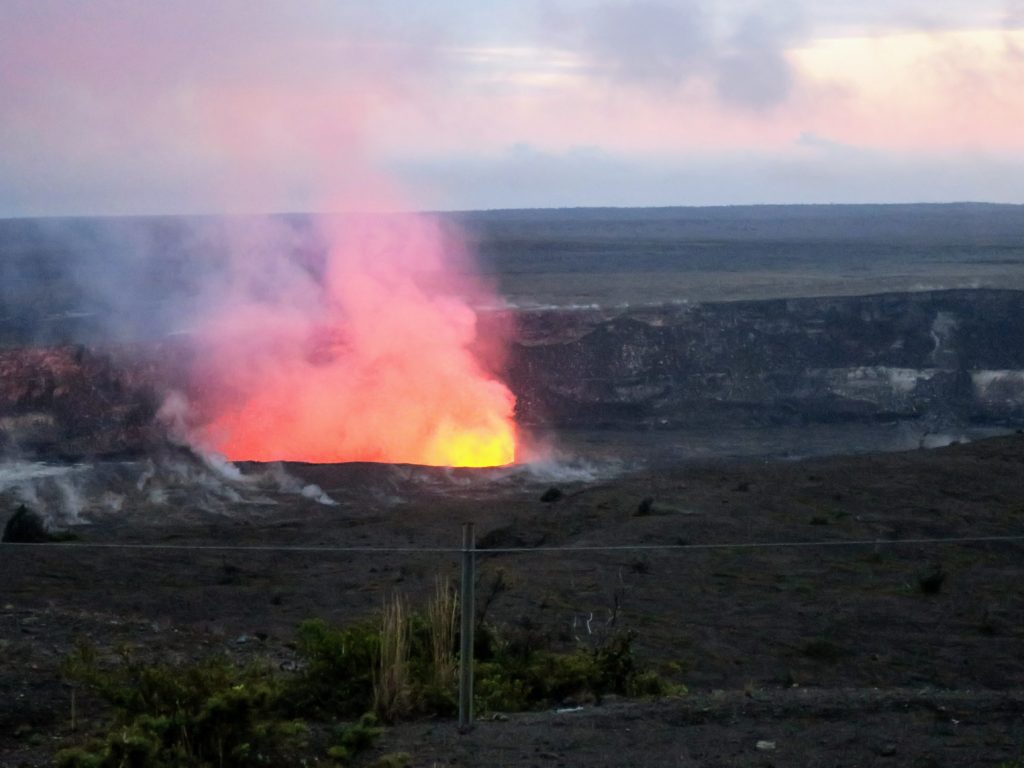 As the sun starts to set, the steam start to glow.
As the sun starts to set, the steam start to glow.
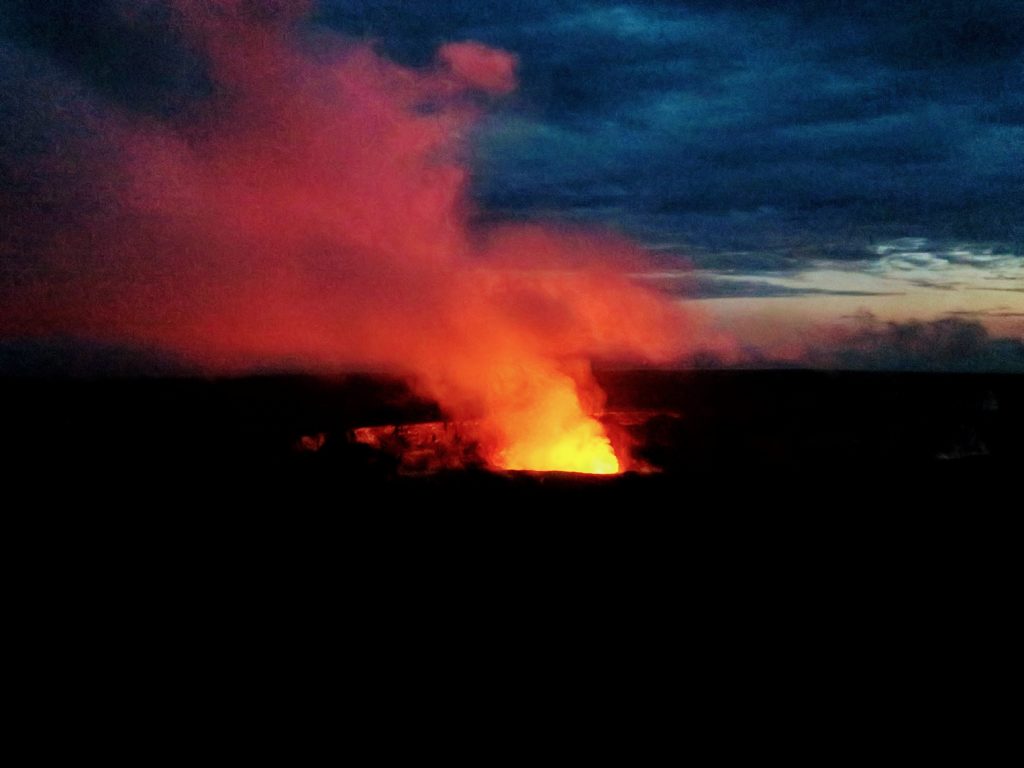 When the sun goes down is when the show starts. Although it looks like the volcano is erupting, rest assure (ahem, mom) that it is only steam. The lava lake is approximately 40m below the floor of the crater.
When the sun goes down is when the show starts. Although it looks like the volcano is erupting, rest assure (ahem, mom) that it is only steam. The lava lake is approximately 40m below the floor of the crater.
 Halemaʻumaʻu is home to Pele, goddess of fire and volcanoes, according to the traditions of Hawaiian mythology. There is an (inaccurate) urban legend that states Pele will affect bad luck on whoever takes pieces of the land away from Hawai’i.
Halemaʻumaʻu is home to Pele, goddess of fire and volcanoes, according to the traditions of Hawaiian mythology. There is an (inaccurate) urban legend that states Pele will affect bad luck on whoever takes pieces of the land away from Hawai’i.
It is possible to view the lava while in the park. However, it requires an approximate 12 mile hike on non-maintained and unmarked trails. You can, however, get as close as you want to the lava. Time and weather (it started raining) were not on my side and I decided not to attempt the hike. So no lava viewing for me. Sad!
The park does have other really neat volcano related points of interest. My favourite were the steam vents! Ground water seeps into the warm volcanic rock and returns to the surface as steam. It’s pretty incredible to witness this thermal area in action!
Fun fact: the steam stinks!
 Another unique feature of the Volcano Park: the Thurston lava tube! This 500-year-old lava cave is a blast to walk through! It was formed gradually as a river of lava passed through, building walls and a ceiling as it went. Once the lava stopped, a tube was left behind!
Another unique feature of the Volcano Park: the Thurston lava tube! This 500-year-old lava cave is a blast to walk through! It was formed gradually as a river of lava passed through, building walls and a ceiling as it went. Once the lava stopped, a tube was left behind!
The lava tube is surrounded by a lush rainforest, another great example of Hawai’i biodiversity! This pre-historic rainforest is home to a plethora of birds, some found nowhere else on earth. I did not see any, however I could clearly hear them!
It’s incredible to think that such lush foliage can grow on such a desolate and volatile location as a volcano!
 It’s eerie and wonderful to think that you are walking in a surface where not only lava flowed but was lava-formed.
It’s eerie and wonderful to think that you are walking in a surface where not only lava flowed but was lava-formed.
I ended my day in Hawai’i’s National Volcanoes Park with a drive down the Chain of Craters road. This route is described as an “Exceptionally Scenic and Spectacular Drive”. On that, I definitely agree. You drive past craters of the various volcanoes as well as lava flows (solidified, of course) as recent as the 2000’s! The road end abruptly, as lava engulfed a portion of the road in 2003.

There are basically 2 types of lava and they both officially carry a Hawaiian name: pahoehoe (pronounced ‘paw-hoey-hoey”) and aa (pronounced “ah-ah”). Pahoehoe (photo, above) is what I picture in my head when I thought of solidified lava; its name literally means smooth, unbroken lava. Its smooth, billowy, undulating or ropy. As for aa (photo, below), its characterized by rough, rubble-looking surface. It’s dark in color and hiking over it is quite difficult!

There are minerals in the lava and their presence can be seen in a colourful way in the lava rock. This phenomenon is sometimes referred to as “lava rainbow”.
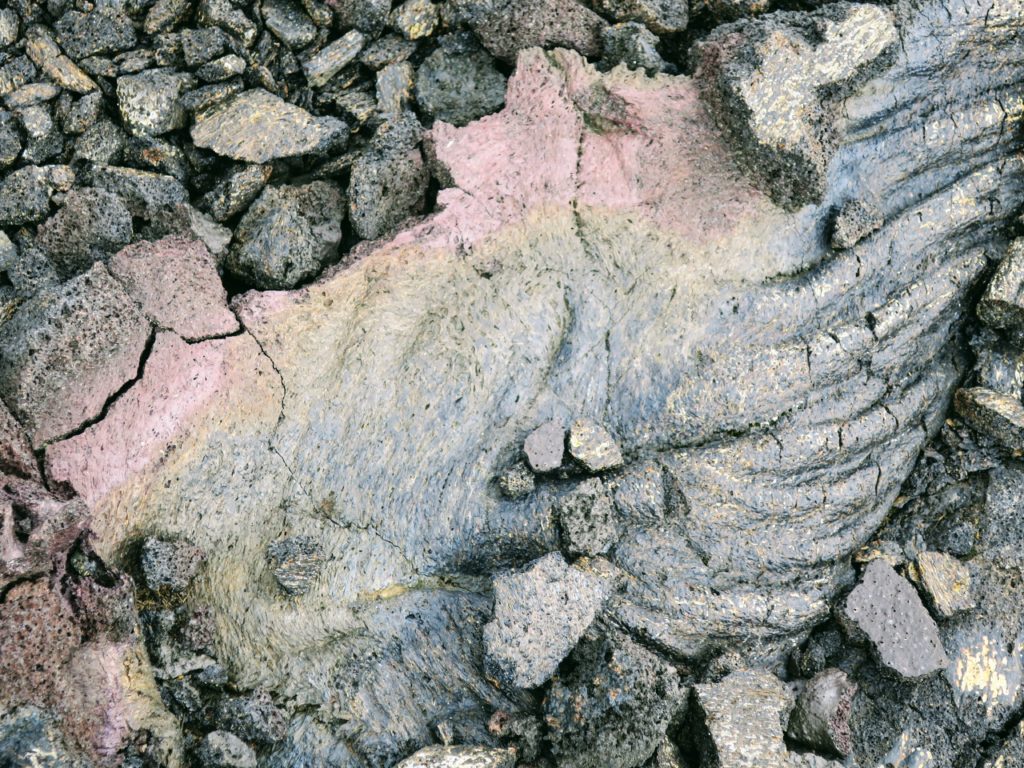

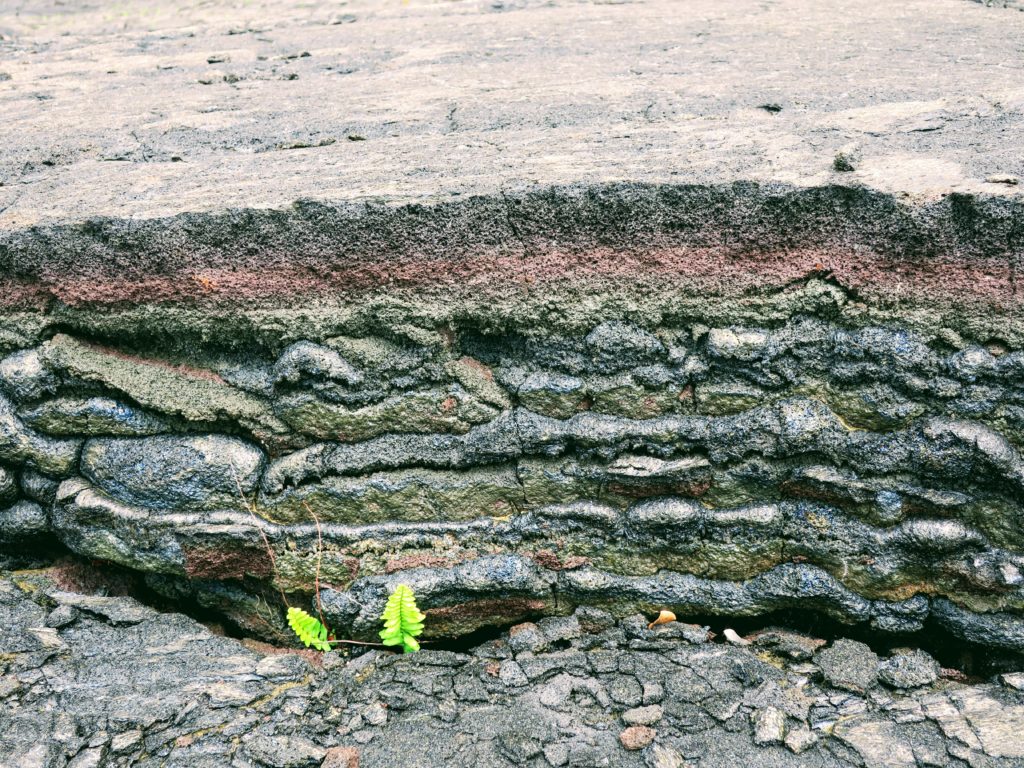
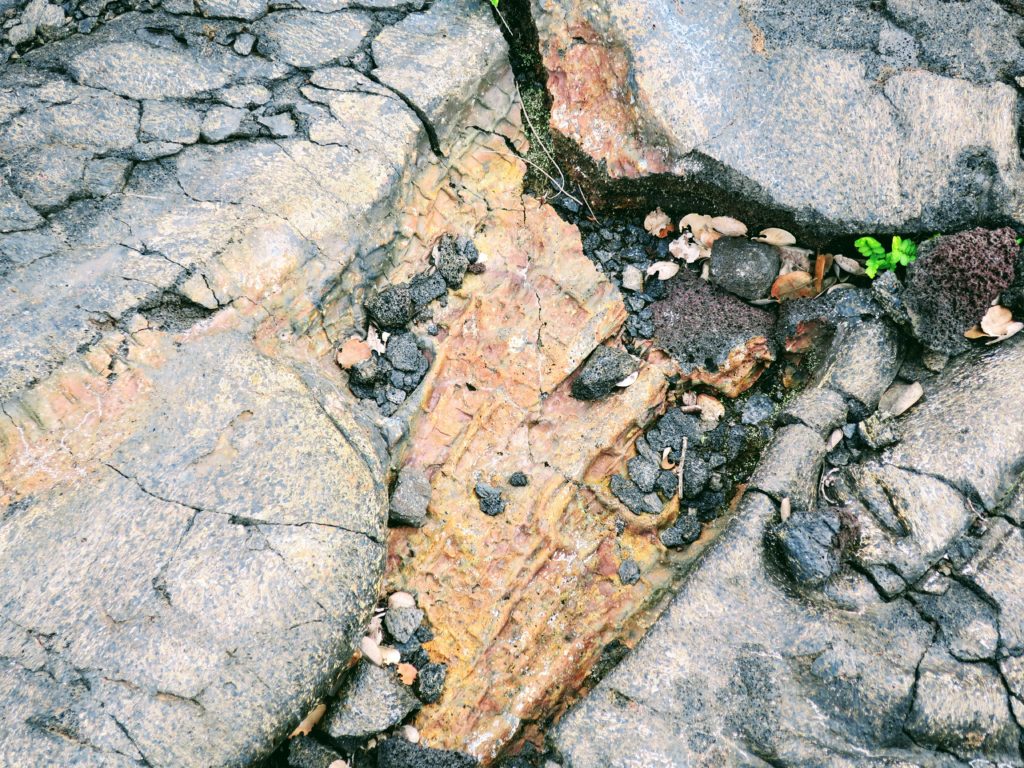
Even though I was slightly disappointed not to get the chance to see lava up close (nor cook a marshmallow over it for my nephew ), I thoroughly enjoyed my day on the ‘world’s only drive-thru volcano”.
